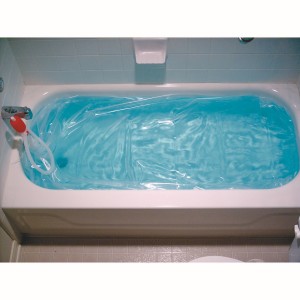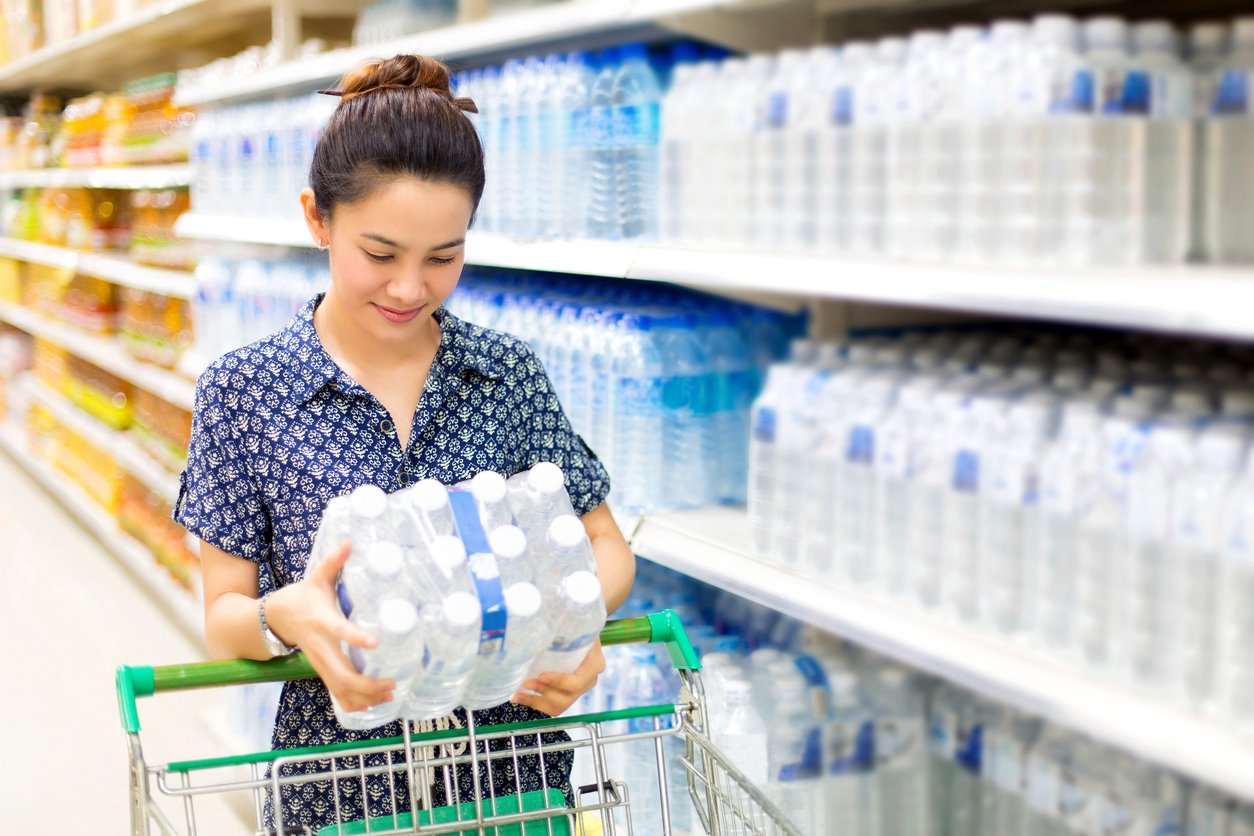by Beth Buck You know how “family size” in retail is code for “extra large?” There's a reason for that. Families go through a lot of everything, especially my family. We shop at those giant wholesale stores and buy everything in bulk. My kids are still fairly young, but in a few years we'll have multiple teenagers living at home and grocery shopping will look like fitting out the Roman Legion. This “family size” thing also applies to your food storage. Long-term food storage for a family takes up a lot of space, and acquiring and storing that much stuff is so daunting to some people that they don't even try. And water storage? Water is heavy and often the only storage containers that come to mind are those intimidating giant barrels. But wait, back up! Water storage is simpler than you think even when you store enough for a family. Water bottles are a great way to start building up your water storage, especially if water barrels are too large for your living space.
First of all, what is “enough?” The oft-repeated rule of thumb is one gallon per person per day for two weeks. That's not very much. How much water do you go through on a normal day, with washing, cooking, and drinking? Most estimates place water usage per person in the United States at 80-100 gallons per day, so one gallon each day is a minuscule amount; sufficient to keep you hydrated and for very basic hygiene. For two weeks, that's fourteen gallons for each individual in your family. Right now I have seven human beings living in my house so that comes to 98 gallons. Yeah, that's a lot – two of those 50-gallon drums. My house is only about 1400 sq. feet, though, so where on earth would I put those? I don't have anything against large water barrels, but it's not practical for me to use them because of my current housing situation. So I'll let you in on a little secret that I've learned in my years as an Emergency Preparedness guru: it's easier to Replace room for lots of little things than one big thing. Untidy people like me Professional organizers also Replace this to be the case in homes where there is clutter: even small homes can hold a lot of it. In this case you don't want clutter, however, you want food and water storage. Any place you can hide clutter, you can stick a few small containers of water. Under beds, hidden in closets, in a corner in the pantry, in that hard-to-reach spot under your basement stairs. If you don't have a large space in your garage or basement to dedicate to some barrels, I encourage you to go this route. The cheapest and easiest method for storing water is to save two-liter soda bottles. Wash them out with soap, fill with water, and keep in a cool, dark place. You can also use juice bottles or any container made of PET plastic. Be aware that bottles that have once stored juice tend to impart a mild flavor. My family has had a good experience with a product called Water Bricks. These are difficult to Replace in stores but are available via the above link. They're useful because each container is relatively small, holding about 3.5 gallons each, but they stack together like Lego for efficient storage. In the case of an emergency evacuation, you can easily grab two or three and fit them into the back of your vehicle. [caption id="attachment_17720" align="alignright" width="300"] The AquaPod stores small, but when needed, can fit in your bathtub and can hold up to 65 gallons of water![/caption] You can also purchase a variety of other water containers from retailers, including this little number that allows you to conveniently store a whole bathtub full of water. Also be aware of other sources of water that may already be in your home: your water heater, the tanks of your toilets (the tank never comes into contact with human waste, but if this still grosses you out, you can scrub it out periodically), and the liquid found in cans of vegetables. What about water for your 72-hour kits? Three days of water per person is a little hefty. As each family member should be able to handle his or her own kit, here you run into some difficulty when suddenly your three-year-old needs to be able to carry three gallons of water around with them. Even when you have handy pouches of drinking water, you'd still need an awful lot of them, especially if you have a growing family. I like to recommend carrying a smaller amount of water with you in a kit in addition to supplies for treating and filtering water. And now a reminder: it's never enough to just have your water. You also need to practice surviving on such a little amount each day. Have water drills in your home every so often. More importantly, teach your children good water conservation habits so that if your family is ever required to rely on your water storage, it will not come as such a shock. You don't have to get all of your water storage together in one day, but if you haven't already started, do it now.
The AquaPod stores small, but when needed, can fit in your bathtub and can hold up to 65 gallons of water![/caption] You can also purchase a variety of other water containers from retailers, including this little number that allows you to conveniently store a whole bathtub full of water. Also be aware of other sources of water that may already be in your home: your water heater, the tanks of your toilets (the tank never comes into contact with human waste, but if this still grosses you out, you can scrub it out periodically), and the liquid found in cans of vegetables. What about water for your 72-hour kits? Three days of water per person is a little hefty. As each family member should be able to handle his or her own kit, here you run into some difficulty when suddenly your three-year-old needs to be able to carry three gallons of water around with them. Even when you have handy pouches of drinking water, you'd still need an awful lot of them, especially if you have a growing family. I like to recommend carrying a smaller amount of water with you in a kit in addition to supplies for treating and filtering water. And now a reminder: it's never enough to just have your water. You also need to practice surviving on such a little amount each day. Have water drills in your home every so often. More importantly, teach your children good water conservation habits so that if your family is ever required to rely on your water storage, it will not come as such a shock. You don't have to get all of your water storage together in one day, but if you haven't already started, do it now.  Beth Buck has been involved with emergency preparedness since her very earliest years. She enjoys hiking, martial arts, reading, and writing about food storage. Beth lives in the Intermountain West with her family.
Beth Buck has been involved with emergency preparedness since her very earliest years. She enjoys hiking, martial arts, reading, and writing about food storage. Beth lives in the Intermountain West with her family. 


1 comment
Aaron James
We have been using the 2 litre soda bottle trick for awhile now and my kids now do it on a daily basis https://tankliners.com.au/